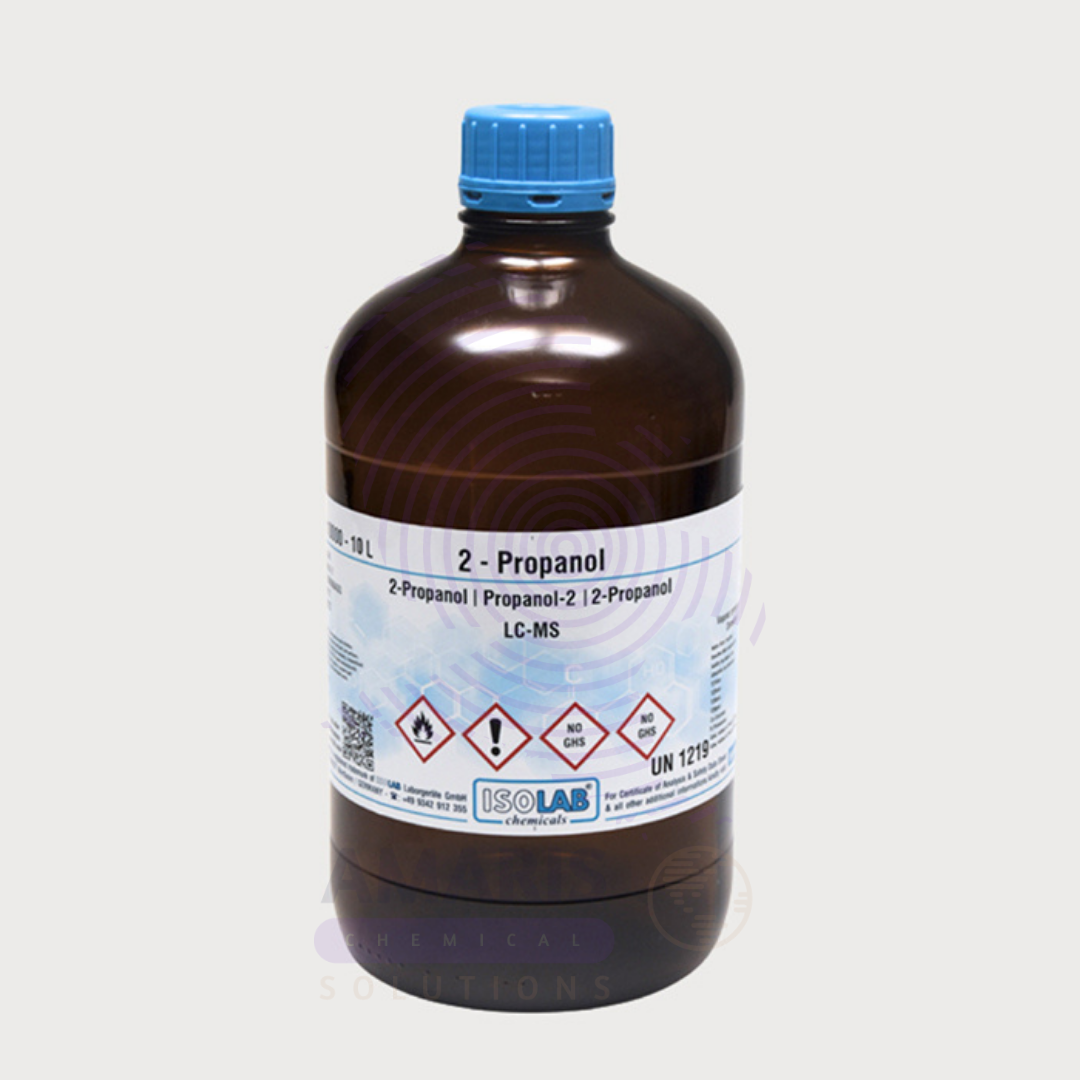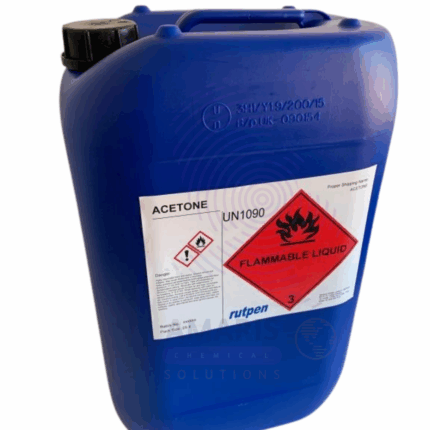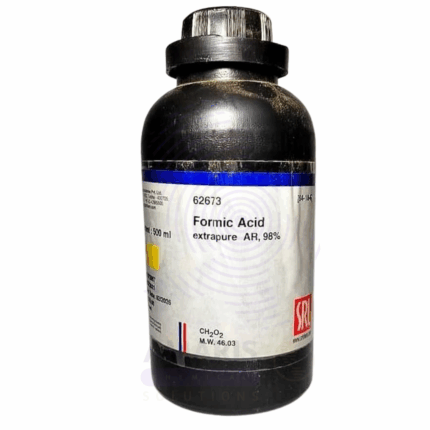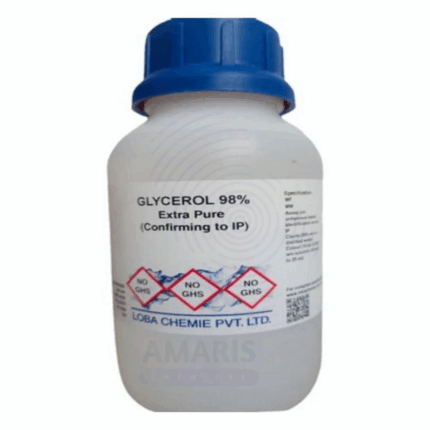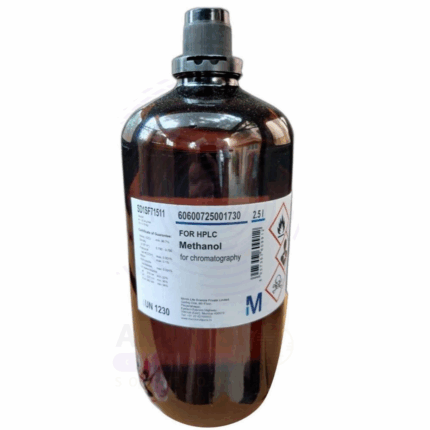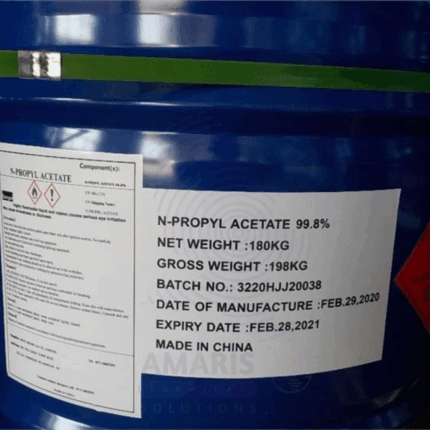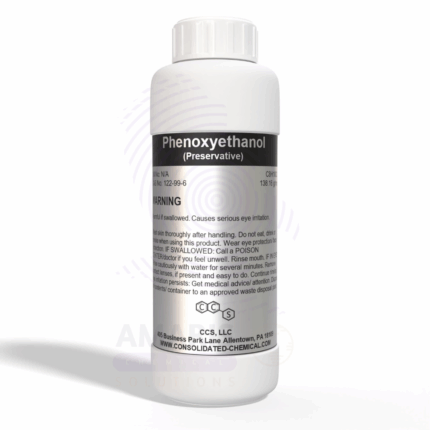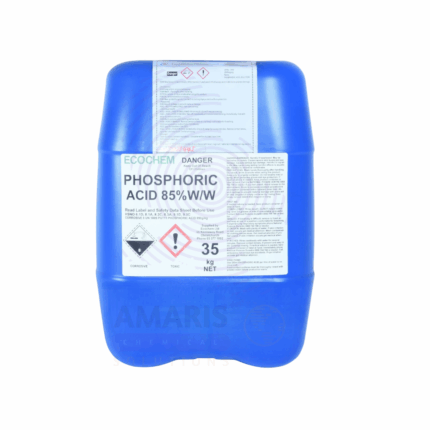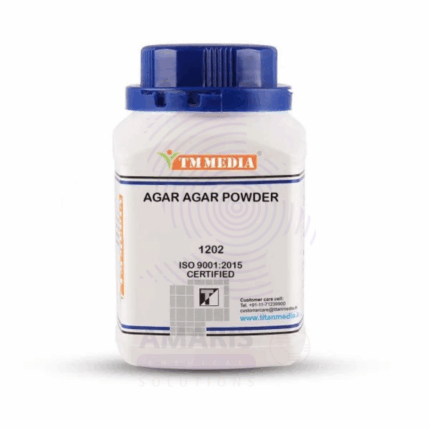
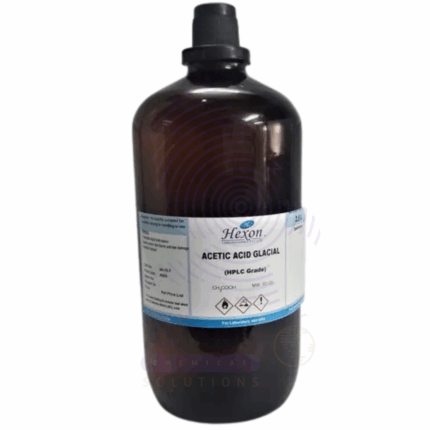
2 Propanol Extra Pure
$ 31.00 Original price was: $ 31.00.$ 30.23Current price is: $ 30.23.
2 Propanol Extra Pure, also known as isopropanol or isopropyl alcohol, is a clear, colorless, and highly volatile liquid with a distinctive alcoholic odor. Renowned for its high level of purity, it is widely utilized in laboratory analysis, pharmaceutical manufacturing, and electronics cleaning where precision and minimal residue are critical. Its excellent solvency properties make it effective for dissolving oils, resins, and various organic compounds, while its rapid evaporation rate and low toxicity enhance its usability in surface sterilization and disinfection applications. Fully miscible with water and many organic solvents, 2-Propanol Extra Pure plays a key role in the formulation of antiseptics, cosmetics, inks, coatings, and cleaning agents. Due to its flammability and vapor pressure, proper storage and handling are essential to ensure safety and maintain product integrity.
2 Propanol Extra Pure
Primary Uses
- Laboratory Solvent
- Used in analytical and preparative procedures due to its purity.
- Cleaning Agent for Electronics & Optics
- Ideal for cleaning delicate devices, lenses, circuit boards, and precision instruments.
- Disinfectant & Antiseptic
- Kills bacteria and viruses on surfaces and skin; widely used in sterile environments.
- Reagent in Chemical Synthesis
- Acts as a solvent or intermediate in fine chemical, pharmaceutical, or cosmetic synthesis.
- Sample Preparation in Chromatography
- High-purity grade supports reliable results in HPLC, GC, and spectrophotometry.
Secondary Uses
- Cooling Baths (with dry ice)
- Used in cryogenic applications or controlled temperature experiments.
- Dehydrating Agent
- In sample prep for biological or geological analysis.
- Production of Pharmaceuticals
- Used as a solvent or cleaning medium in cGMP facilities for injectable drugs and APIs.
- Cosmetic & Personal Care Manufacturing
- Carrier for active ingredients in lotions, astringents, and hand sanitizers.
- Ink & Paint Formulations
- Used in formulation of inks, dyes, and specialty coatings where purity matters.
- Microbiology Applications
- Surface sterilization, equipment cleaning, and preservation of microbial cultures.
| PACK SIZE |
2.5ltrs |
|---|
1. Basic Identification Attributes
- Chemical Name: 2-Propanol (IUPAC), commonly known as Isopropyl Alcohol
- CAS Number: 67-63-0
- HS Code: 29051200
- Molecular Formula: C₃H₈O
- Synonyms:
-
- Isopropanol
-
- IPA
-
- Rubbing alcohol
-
- sec-Propyl alcohol
-
- Dimethyl carbinol
2.Physical & Chemical Properties
- Physical State: Liquid
- Color & Odor: Colorless; strong, characteristic alcoholic odor
- Boiling Point: ~82.6°C (180.7°F)
- Melting Point: -89°C (-128°F)
- Density/Specific Gravity: ~0.785 g/cm³ at 20°C
- Solubility:
-
- Water: Completely miscible
-
- Organic Solvents: Miscible with most organic solvents like ethanol, ether, chloroform
- pH Level: Neutral (typically ~7 in aqueous solution)
- Vapor Pressure: ~33 mmHg at 20°C
- Volatility: High
- Flash Point: 12°C (closed cup)
- Autoignition Temperature: 399°C (750°F)
- Viscosity: ~2.43 cP at 25°C
3.Safety & Hazard Attributes
- Hazard Class (GHS):
-
- Flammable Liquid (Category 2)
-
- Eye Irritation (Category 2A)
-
- Specific target organ toxicity - single exposure (Category 3, narcotic effects)
- NFPA Ratings:
-
- Health: 1
-
- Flammability: 3
-
- Reactivity: 0
- Exposure Limits:
-
- OSHA PEL: 400 ppm (980 mg/m³)
-
- ACGIH TLV: 200 ppm TWA, 400 ppm STEL
- Reactivity:
-
- Stable under normal conditions
-
- Incompatible with oxidizers (e.g., chromic acid, hydrogen peroxide), acids, and halogens
4.Storage & Handling Attributes
- Storage Conditions:
-
- Store in a cool, well-ventilated area
-
- Keep away from heat, sparks, open flames
- Incompatible Materials:
-
- Strong oxidizing agents, acids, halogens
- Container Type:
-
- Preferably metal or tightly sealed HDPE/plastic containers
- Shelf Life & Expiration Date:
-
- Typically 2–3 years if stored properly
- Special Handling Requirements:
-
- Use in well-ventilated areas
Wear gloves, goggles, flame-proof equipment as needed
5.Regulatory & Compliance Attributes
- Regulatory Status:
-
- Listed under OSHA, REACH, TSCA, DSL
-
- EPA approved under certain uses
- Transportation Restrictions:
-
- UN Number: UN1219
-
- Hazard Class: 3 (Flammable Liquid)
-
- Packing Group: II
- Waste Disposal Method:
-
- Dispose of via licensed chemical waste disposal agency
-
- Follow EPA/RCRA regulations for flammable organic wast
6.Environmental & Health Impact
- Ecotoxicity:
-
- Low aquatic toxicity at low concentrations
-
- LC50 (fish, 96h): ~9,640 mg/L
- Persistence in Environment:
-
- Readily biodegradable
- Carcinogenicity/Mutagenicity:
-
- Not classified as carcinogenic by IARC, OSHA, or NTP
- Biodegradability:
-
- Readily biodegradable under aerobic conditions
SAFETY HANDLING PRECAUTIONS
Personal Protective Equipment (PPE):
-
- Wear chemical-resistant gloves, lab coat, and safety goggles.
- Use a respirator in poorly ventilated areas or if vapor exposure is possible.
- Handling:
- Avoid contact with skin, eyes, and clothing.
- Use in a well-ventilated area—preferably under a chemical fume hood.
- Avoid breathing vapors or mist.
- Keep away from heat, sparks, open flames, and hot surfaces.
- Storage:
- Store in tightly closed containers in a cool, dry, well-ventilated, flameproof area.
- Keep away from oxidizing agents, acids, and ignition sources.
- Ground and bond containers when transferring.
- Hygiene Measures:
- Wash hands thoroughly after handling.
- Remove contaminated clothing and wash before reuse.
FIRST AID MEASURES
- Inhalation:
- Remove the victim to fresh air.
- If breathing is difficult, provide oxygen.
- Seek medical attention if symptoms persist.
- Skin Contact:
- Wash immediately with soap and plenty of water.
- Remove contaminated clothing.
- If irritation persists, seek medical attention.
- Eye Contact:
- Rinse cautiously with water for at least 15 minutes.
- Lift eyelids occasionally while rinsing.
- Seek medical help immediately.
- Ingestion:
- Rinse mouth with water.
- Do not induce vomiting.
- Seek immediate medical attention.
- If unconscious, do not give anything by mouth.
FIRE FIGHTING MEASURES
- Suitable Extinguishing Media:
- Use alcohol-resistant foam, dry chemical, carbon dioxide (CO₂), or water spray.
- Avoid direct stream of water on the burning liquid—it may spread the fire.
- Specific Hazards:
- Highly flammable—vapors may form explosive mixtures with air.
- Combustion may produce carbon monoxide and carbon dioxide.
- Protective Equipment for Firefighters:
- Wear self-contained breathing apparatus (SCBA).
- Use full protective clothing.
- Firefighting Instructions:
- Cool closed containers exposed to fire with water spray.
- Eliminate all ignition sources and evacuate area if needed.


 Preservatives(food)
Preservatives(food) Flavor Enhancers
Flavor Enhancers Acidulants
Acidulants Sweeteners
Sweeteners Antioxidants
Antioxidants Colorants(food)
Colorants(food) Nutraceutical Ingredients (food)
Nutraceutical Ingredients (food) Nutrient Supplements
Nutrient Supplements Emulsifiers
Emulsifiers
 Collectors
Collectors Dust Suppressants
Dust Suppressants Explosives and Blasting Agents
Explosives and Blasting Agents Flocculants and Coagulants
Flocculants and Coagulants Frothers
Frothers Leaching Agents
Leaching Agents pH Modifiers
pH Modifiers Precious Metal Extraction Agents
Precious Metal Extraction Agents
 Antioxidants(plastic)
Antioxidants(plastic) Colorants (Pigments, Dyes)
Colorants (Pigments, Dyes) Fillers and Reinforcements
Fillers and Reinforcements Flame Retardants
Flame Retardants Monomers
Monomers Plasticizers
Plasticizers Polymerization Initiators
Polymerization Initiators Stabilizers (UV, Heat)
Stabilizers (UV, Heat)
 Antifoaming Agents
Antifoaming Agents Chelating Agents
Chelating Agents Coagulants and Flocculants
Coagulants and Flocculants Corrosion Inhibitors
Corrosion Inhibitors Disinfectants and Biocides
Disinfectants and Biocides Oxidizing Agents
Oxidizing Agents pH Adjusters
pH Adjusters Scale Inhibitors( water)
Scale Inhibitors( water)
 Antioxidants(cosmetic)
Antioxidants(cosmetic) Emollients
Emollients Fragrances and Essential Oils
Fragrances and Essential Oils Humectants
Humectants Preservatives
Preservatives Surfactants(cosmetic)
Surfactants(cosmetic) Thickeners
Thickeners UV Filters
UV Filters
 Fertilizers
Fertilizers Soil Conditioners
Soil Conditioners Plant Growth Regulators
Plant Growth Regulators Animal Feed Additives
Animal Feed Additives Biostimulants
Biostimulants Pesticides (Herbicides, Insecticides, Fungicides)
Pesticides (Herbicides, Insecticides, Fungicides)
 Active Pharmaceutical Ingredients (APIs)
Active Pharmaceutical Ingredients (APIs) Excipients
Excipients Solvents(pharmaceutical)
Solvents(pharmaceutical) Antibiotics
Antibiotics Antiseptics and Disinfectants
Antiseptics and Disinfectants Vaccine Adjuvants
Vaccine Adjuvants Nutraceutical Ingredients (pharmaceutical)
Nutraceutical Ingredients (pharmaceutical) Analgesics & Antipyretics
Analgesics & Antipyretics
 Analytical Reagents
Analytical Reagents Solvents(lab)
Solvents(lab) Chromatography Chemicals
Chromatography Chemicals Spectroscopy Reagents
Spectroscopy Reagents microbiology-and-cell-culture-reagents
microbiology-and-cell-culture-reagents Molecular Biology Reagents
Molecular Biology Reagents Biochemical Reagents
Biochemical Reagents Inorganic and Organic Standards
Inorganic and Organic Standards Laboratory Safety Chemicals
Laboratory Safety Chemicals Specialty Laboratory Chemicals(Special Laboratory Equipment)
Specialty Laboratory Chemicals(Special Laboratory Equipment)
 Demulsifiers
Demulsifiers Hydraulic Fracturing Fluids
Hydraulic Fracturing Fluids Scale Inhibitors(oil)
Scale Inhibitors(oil) Surfactants(oil)
Surfactants(oil) Drilling Fluids
Drilling Fluids
 Dyes and Pigments
Dyes and Pigments Bleaching Agents
Bleaching Agents Softening Agents
Softening Agents Finishing Agents
Finishing Agents Antistatic Agents
Antistatic Agents
 Admixtures
Admixtures Waterproofing Agents
Waterproofing Agents Sealants and Adhesives
Sealants and Adhesives Curing Compounds
Curing Compounds Concrete Repair Chemicals
Concrete Repair Chemicals Anti-Corrosion Coatings
Anti-Corrosion Coatings
 Surfactants(cleaning)
Surfactants(cleaning) Builders
Builders Enzymes
Enzymes Solvents (Cleaning)
Solvents (Cleaning) Fragrances
Fragrances
 Electronic Chemicals
Electronic Chemicals Catalysts
Catalysts Lubricants
Lubricants Photographic Chemicals
Photographic Chemicals Refrigerants
Refrigerants Automotive chemicals
Automotive chemicals Pyrotechnic Chemicals
Pyrotechnic Chemicals
 Biodegradable Surfactants
Biodegradable Surfactants Bio-based Solvents
Bio-based Solvents Renewable Polymers
Renewable Polymers Carbon Capture Chemicals
Carbon Capture Chemicals Wastewater Treatment Chemicals
Wastewater Treatment Chemicals
 Pigments
Pigments Solvents(paint)
Solvents(paint) Specialty Coatings
Specialty Coatings Binders/Resins
Binders/Resins Additives
Additives Driers
Driers Anti-Corrosion Agents
Anti-Corrosion Agents Functional Coatings
Functional Coatings Application-Specific Coatings
Application-Specific Coatings
 Fresh Herbs
Fresh Herbs Ground Spices
Ground Spices Whole Spices
Whole Spices Spice Blends
Spice Blends Dried Herbs
Dried Herbs
 Leavening Agents
Leavening Agents Dough Conditioners
Dough Conditioners Flour Treatments
Flour Treatments Fat Replacers
Fat Replacers Decoratives
Decoratives Preservatives(baking)
Preservatives(baking)
 Plasticizers & Softeners
Plasticizers & Softeners Reinforcing Agents
Reinforcing Agents Adhesion Promoters
Adhesion Promoters Vulcanizing Agents
Vulcanizing Agents Antidegradants
Antidegradants Blowing Agents
Blowing Agents Fillers & Extenders
Fillers & Extenders Accelerators & Retarders
Accelerators & Retarders